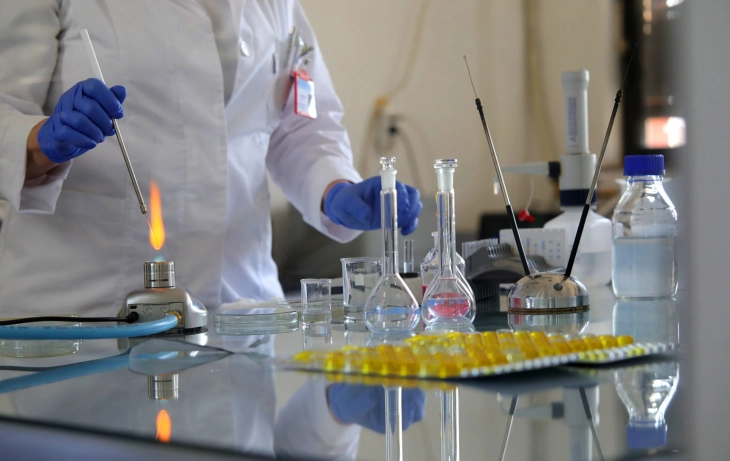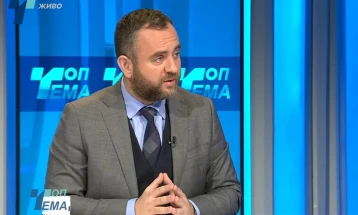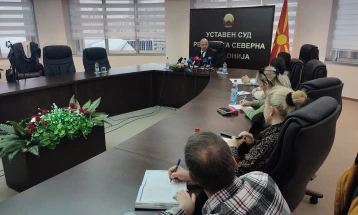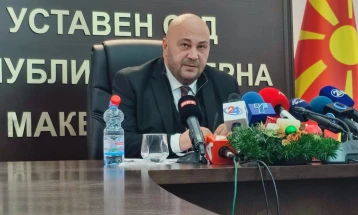North Macedonia annually spends 22 euro per capita on R&D

Skopje, 16 August 2022 (MIA) – An average of 22 euro per capita is spent on research and development R&D in North Macedonia. Most of the money is spent on research in health and education, while defense and energy research have received the least funds.
According to data from the State Statistical Office, in 2020 the total money spent on R&D in the country amounted to 40.553.219 euro. Most of them – 63.5 percent were spent in the higher education sector, followed by the business sector with 25.6 percent, the state sector with 9.6 percent and only 1.1 percent in the private non-profit sector.
Most of the R&D funds in higher education, around half of them, are from the Ministry of Education and Science, while in the business sector over 80 percent come from personal funds. Over 98 percent of the R&D funds in the private non-profit sector come from income from abroad.
It is interesting to note that although only one fourth of the total R&D funds are spent in the business sector, over 40 percent of research is done in this sector, or 410 out of 1.017 finished and unfinished research projects in 2020. In comparison, the higher education sector received almost two thirds of the total funds, but has only 451 projects or around 4 percent more than the business sector.
Most funds spent on health research – over 40 percent, on agriculture – 2.5 percent, while on defense research – 0.25 percent
When considering the socio-economic goal and the sector of execution, according to data from the State Statistical Office, most of the funds, 42 percent, went to the health sector.
For education research – 24 percent were spent, for general advancement of knowledge – 7.1 percent, for industrial production and technology – 6.9 percent, for culture and recreation, religion and media – 4.1 percent, for agriculture – 2.5 percent, and for political and social systems, structures and processes – 2.49 percent.
2.2 percent were spent on environmental research, 0.5 percent for transport, telecommunications and other infrastructures, 0.25 percent for defense, and 0.23 percent were spent on energy research.
Most of the business sector research was in the health sector – over 70 percent of total funds, while all funds in the private non-profit sector were spent on research in the field of political and social systems, structures and processes.
The Government sector allocated most of its research funds, 55 percent, for research in the field of general advancement of knowledge. Most of the funds for the higher education sector – 36.5 percent were in the field of education, while 31 percent were spent on health research.
Average of 229 euro per capita spent on R&D in EU countries
According to Eurostat data, the budget allocations for R&D in the EU in 2020 amounted to 0.77 percent of GDP or an average of 229.8 euro per capita.
In 2020, the largest budget allocations were in Luxembourg (608 euro per capita), Denmark (519 euro per capita) and Germany (446.9 euro per capita). On the other hand, Romania (20.5 euro per capita), Bulgaria (20.9 euro per capita) and Latvia (41.5 euro per capita) had the lowest budget allocations for R&D.
Of the other countries in the region for which data is available, Serbia spent 31 euro per capita on R&D in 2020, and 32.9 euro in 2021. Croatia spent 96.9 euro per capita in 2020, and 103 euro in 2021. Slovenia in 2020 spent 116 euro per capita on R&D, and 127 euro in 2021.
Government budget allocations for R&D, according to Eurostat’s methodology, cover not only state-funded R&D carried out in government institutions, but also state-funded R&D carried out in the other national sectors (business enterprises, private non-profit organizations, higher education), as well as research done abroad. The data is compiled by the national authorities using data from the public budgets.
There is no such data for our country, but when asked by MIA how much the country spends on R&D, the Ministry of Education and Science answered that the total costs as a percentage of GDP in 2020 amounted to 0.38 percent.
According to data from the State Statistical Office, the gross domestic product in 2020 amounted to around 10.6 billion euro, which means that the total funds spent on R&D amounted to 40.4 million euro.
When we consider the latest data from the 2021 Census according to which the resident population of the country is 1.836.713 citizens, then the calculations show that the country annually spends an average of 22 euro per capita on R&D.
In the EU, 10 percent is spent on research in industry and technology, 7.8 percent on research in the health sector, while 5.6 percent is spent on space exploration
In 2021 the total budget allocation for R&D in the EU was 109.350 million euro, 0.75 percent of GDP or 244 euro per capita, which is a 32.5 percent increase compared to 2011 when 184 euro per capita were spent on research.
When it comes to individual sectors, the largest budget allocations, more than half, in 2021 in the EU were for the general advancement of knowledge, of which 35.9 percent were for R&D financed from general university funds and 17 percent for general advancement of knowledge financed by other sources.
Only 10.1 percent of the funds were allocated for R&D in industry production and technology, 7.8 percent for health research and 5.6 percent for space research.
Around 4.7 percent of the total R&D funds in the EU are spent in the field of energy, 3.8 percent in the field of defense, 3.2 percent for transport and telecommunications, 3 percent for agriculture, 2.6 percent for environmental research, 1.9 percent for political and social systems and processes, 1.8 percent for earth exploration and exploitation, 1.5 percent for education and 1.2 percent for culture, recreation, religion and mass media.
Aleksandar Atanasov
Translated by Angel Dimoski







